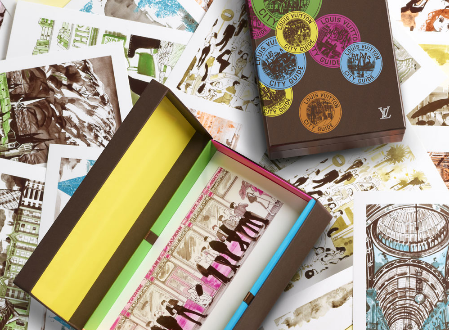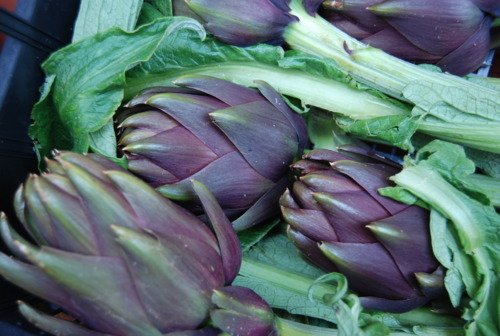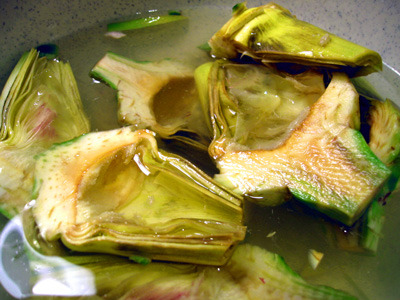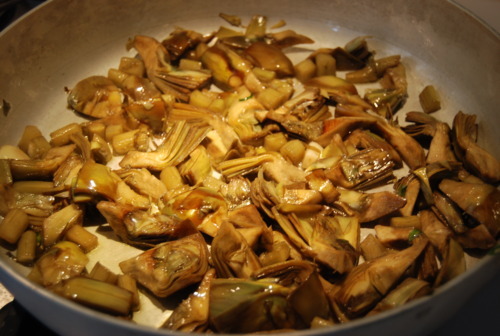Throughout this year I will be sharing with you some delights from Sardinia. As I live here and not many people know much about Sardinia, I thought I would share with you the experiences I have with the culture, the food and drink, different cities and towns and anything else that comes my way. If you have any questions or would like to know about something, please let me know and I will do my best to find out more for you. I need your help to dig deeper into this fantastic island!!
Just so you know exactly where Sardinia-here is a google map.
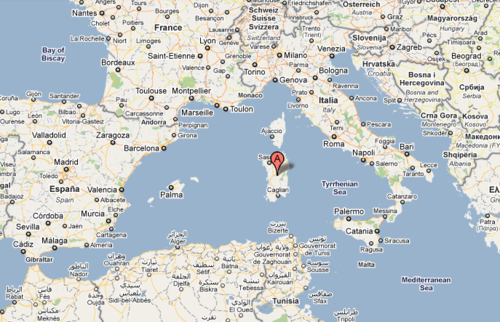
I am going to start off this journey with a little something about Cagliari- the capital city of Sardinia which is located at the south of the Island.
From the 1870s, with the unification of Italy, the city experienced a century of rapid growth. Many outstanding buildings were erected by the end of the 18th century.Many of these buildings combined influences from Art Nouveau together with the traditional Sardinian taste for flower decoration: an example is the white marble City Hall near the port.
During the Second World War, Cagliari was heavily bombed by the Allies. In order to escape from the bombs and the destroyed town, many people left Cagliari and moved to the country, rural villages or mainland Italy. This flee from the town is known as “sfollamento” (deserting). After the war, in September 1943, the German Army took control of Cagliari and the island, but soon retreated peacefully in order to reinforce their positions in mainland Italy. The American Army then took control of Cagliari. Cagliari was very important during the war because of its location in the Mediterranean Sea. Many airports were near Cagliari (Elmas, Monserrato, Decimomannu, currently a NATO airbase) from which airplanes could fly to Northern Africa or mainland Italy and Sicily.
After the war, the population of Cagliari boosted as people returned to the city and many apartment blocks were erected in new residential districts.
The old part of the city (called ‘Castello’, the castle) lies on top of a hill, with a wonderful view of the Gulf of Cagliari (aka Angels Gulf). Most of its city walls are intact, and feature the two 13th century white limestone towers, St. Pancras tower and the Elephant tower. The local white limestone was also used to build the walls of the city and many builidings.
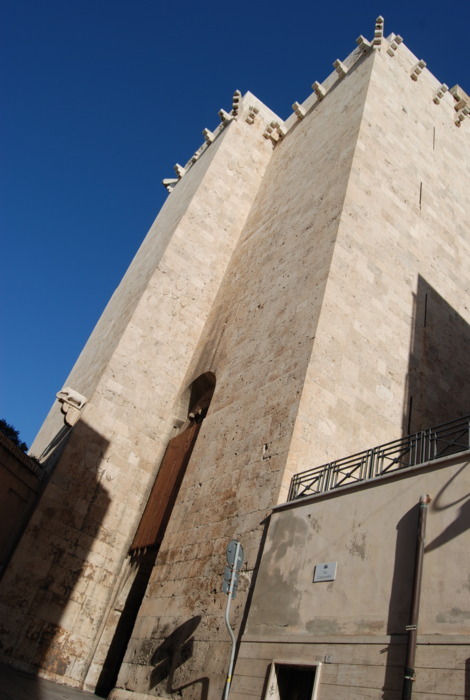
La torre dell’elefante- The elephant tower.
In Castello you can visit the Cathedral, which was repaired in the 1930s turning the former Baroque facade into a Medieval Pisan style facade, more like the original appearance of the church. Near the Cathedral is the palace of the Provincial Government (which used to be the island’s governor’s palace before 1900). In Castello is also the Sardinian Archaeological Museum, the biggest and most important regarding the prehistoric Nuragic civilisation of Sardinia. Finally, Castello hosts many craftsmen workshops in its tightened and scenic lanes.
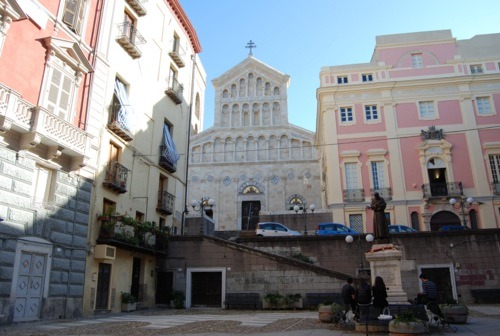
Cattedrale di Santa Maria.
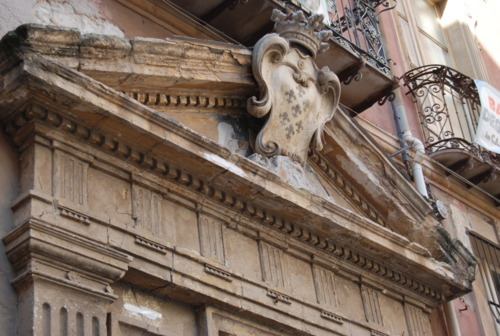
A beautiful detail on an apartment building in the Castello.
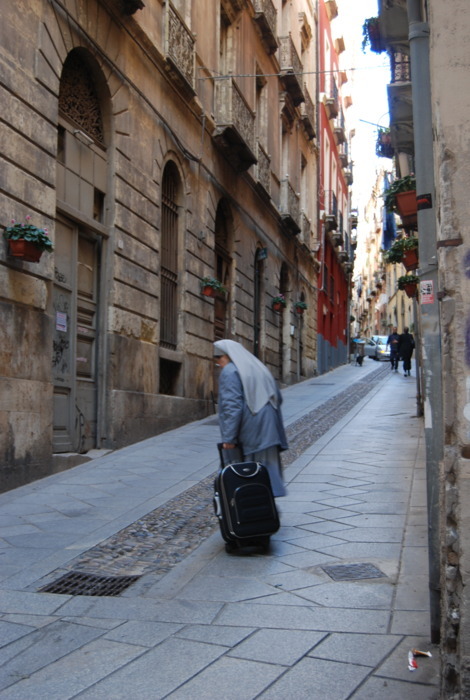
A street within the Castello.
The other early districts of the town (Marina, Stampace, Villanova) retain much of their original appeal and still seem to function as distinct villages within the town.
Cagliari was inhabited since pre-historic periods for its favourable position between the sea and a fertile plain, its being sourrounded by two swamps (which afforded defences from enemies from inner lands) and its vicinity to high and green mountains (to which people could evacuate if everything else was lost).
An outstanding testimony of the Roman domination is the Roman Amphitheatre. This is a unique monument in the world because it is the only Roman amphitheatre carved into a block of rock (the typical limestone on which Cagliari is built). The Amphitheatre still stages open-air operas and concerts during the summer.
The districts built in the 1930s spot some nice examples of Art Deco architecture and some controversial examples of Fascist neoclassicism, such as the Justice Court (Palazzo di Giustizia) in the Republic Square. The Justice Court is close to the biggest town park, Monte Urpinu, with its pine trees and artificial lakes. The park includes a vast area of a hill. Visitors can reach the top of the hill by car and enjoy a nice view of Castello district, the gulf, the swamps and the beach.
Cagliari has one of the longest beaches in an Italian town. The Poetto beach stretches for 13 km. and was famous for its white fine-grained sand. A recent controversial intervention to save the beach from erosion has slightly altered the original texture of the sand.
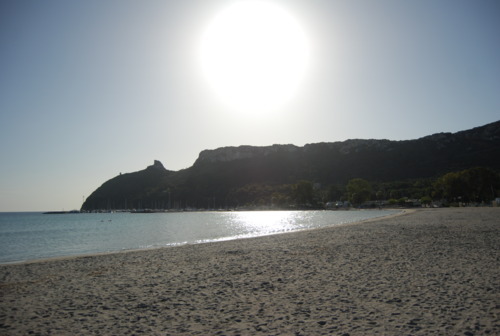
The Poetto looking south.
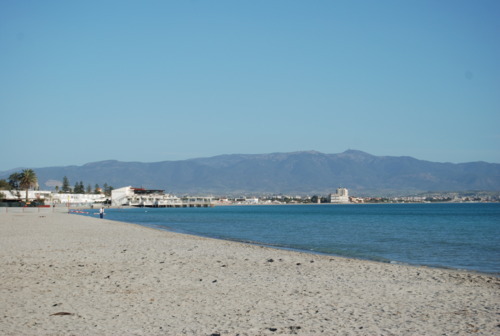
The Poetto looking north east.
Cagliari is an ideal location for sailing, hiking and outdoor sports. It has a mild to warm climate, often refreshed by northern-west winds. It is close to other beautiful sea-side locations, such as Chia or Villasimius, still relatively unspoilt by tourism and is also close to mountain parks, such as Monte Arcosu or Maidopis, with large forests and wildlife (Sardinian deers, wild boars, etc.).
Cagliari has some peculiar gastronomic traditions. Many dishes are based on the wide variety of fish and seafood available and roasted suckling pigs cooked over a log fire then left to infuse myrtle leaves. Baby lamb, goat, and rabbit are also very popular. I will post more on food delights later.
Here are a few more photo’s that I have taken, so far, of Cagliari.
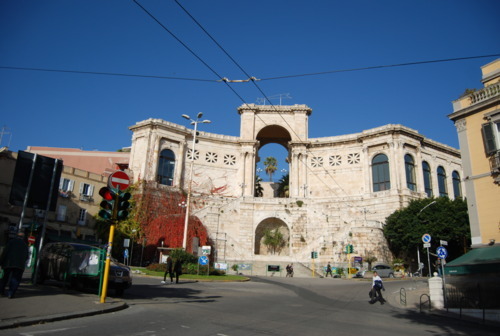
A view of Bastione di Saint-Rémy from the bottom.
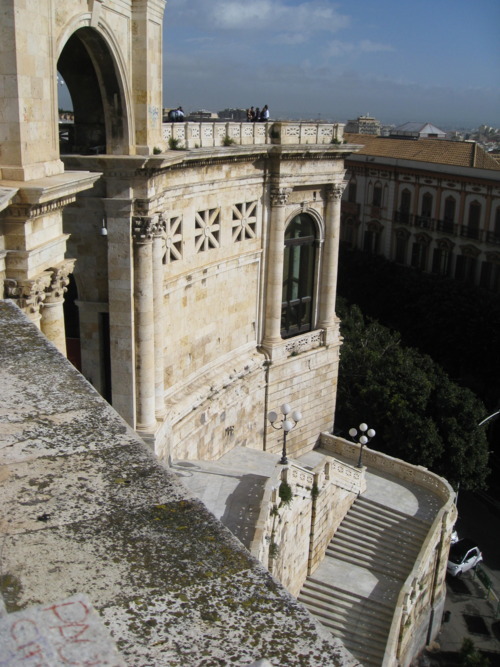
A view of Bastione di Saint-Rémy from the top.
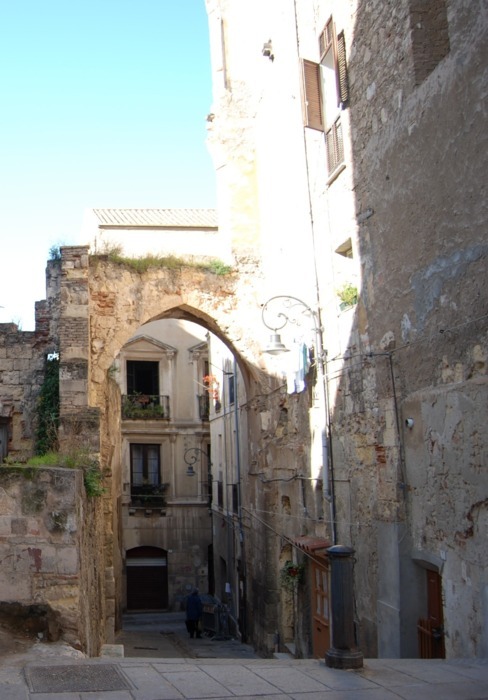
A view from a street within the Castello.
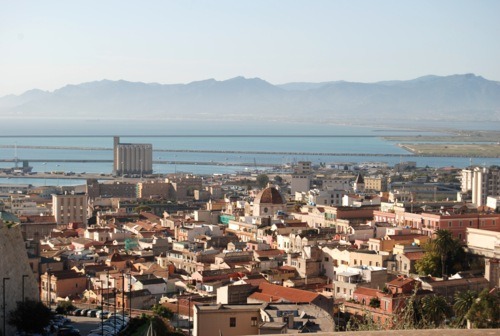
A view towards the port.
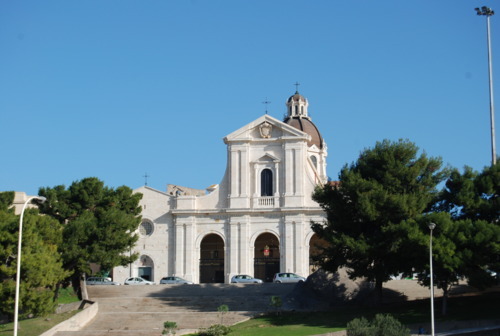
Chiesa di Bonaria. This church which was built in 1324 by King Alfonso of Aragon, it faces the sea and was given it name in memory of the statue of Madonna di Bonaria which was brought in from rough seas.
This information was gathered from various Sardinian’s and the web. All photos taken by me.
I hope you have enjoyed!
j-b x
